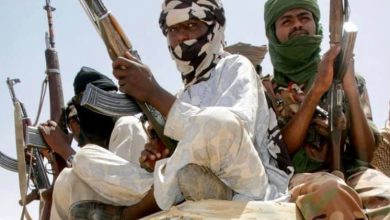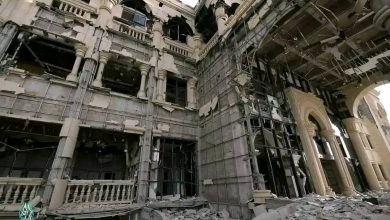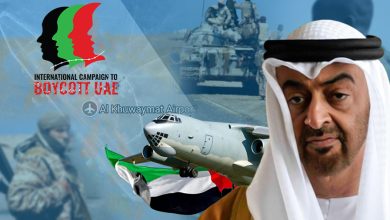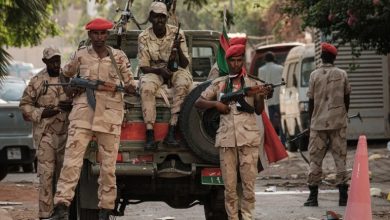Is the Army Approaching Darfur?
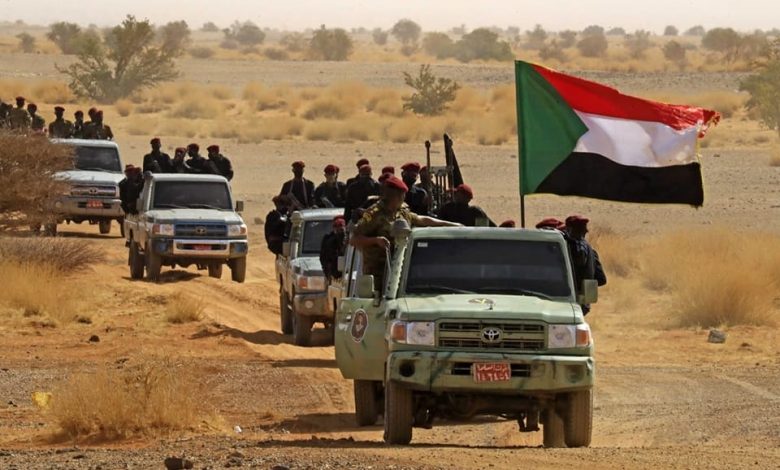
Report by: Al-Noor Ahmed Al-Noor
As the Sudanese army advances in central Sudan and Khartoum State, the “Hunter” mobile force has made significant breakthroughs by seizing the cities of Umm Rawaba and Al-Rahad—the second and third largest cities in North Kordofan State, which borders the Darfur region (west). This advance brings the army closer to breaking the siege on El-Obeid, the state capital, and paves the way for the liberation of its northern localities.
Military experts believe that the arrival of the “Hunter” force—which consists of army units, allied factions, and mobilized fighters—to El-Obeid marks the beginning of the army’s reclamation of large parts of West Kordofan and northern South Kordofan, setting the stage for an advance toward Darfur.
On January 25, the army announced the completion of the second phase of military operations in Khartoum, linking its forces coming from Omdurman and North Bahri with troops at the Signal Corps headquarters in the far south of Khartoum Bahri. This step effectively ended the siege of the army’s General Command headquarters in central Khartoum.
More than a year ago, the army formed the “Martyr Hunter” mobile force, consisting of army units from White Nile State (south), troops that withdrew from Nyala (the capital of South Darfur), forces from the Fifth Infantry Division (Haganah) in North Kordofan, and counter-terrorism units from the Intelligence Service.
The military leadership tasked this force with securing the road linking Kosti in White Nile State to El-Obeid, the capital of North Kordofan, as part of its route toward Darfur. Its mission also includes breaking the Rapid Support Forces’ (RSF) siege on El-Obeid, which has been in place since the early days of the war, disrupting commercial truck movements, humanitarian convoys, and exports of livestock and agricultural products—including gum arabic, for which the region hosts the world’s largest trading hub.
Breakthrough in Kordofan
At the end of January, the “Hunter” force reclaimed control of Umm Rawaba, the second-largest city in North Kordofan, after battles with the RSF, which used ambushes and drones in an attempt to slow its advance.
The RSF had controlled Umm Rawaba since September 2023. The city lies about 145 kilometers from El-Obeid, the capital of North Kordofan, and approximately 480 kilometers southwest of Khartoum.
Umm Rawaba is a key commercial hub with a major oilseed market and serves as a critical railway and road junction linking western Sudan and South Kordofan to Khartoum and Port Sudan in the east.
The “Hunter” force then advanced westward from Umm Rawaba and, on February 17, stormed Al-Rahad, the third-largest city in North Kordofan. Al-Rahad, which borders South Kordofan, is also known for its production of oilseeds and hibiscus.
Additionally, on Wednesday, army units liberated several villages near Al-Rahad, including Sidrah and Jebel Al-Dayer, which are adjacent to South Kordofan and had been occupied by RSF forces.
A Forward Operating Base
Military sources told Al Jazeera Net that the battles between the army and the RSF were intense, with RSF forces bringing in fighters from West and South Kordofan to defend Umm Rawaba and Al-Rahad. However, they suffered heavy losses, including hundreds of dead and wounded fighters and the destruction of dozens of combat vehicles, leading to what the sources described as a “crippling blow” to their strength.
The arrival of the “Hunter” force in El-Obeid is expected to signal the beginning of the end for the RSF in the three Kordofan states. The RSF still has a presence in the cities of Al-Fula and Al-Mujlad, as well as other areas in West Kordofan. They also control Al-Quz locality and its capital, Al-Debeibat, in northern South Kordofan, and parts of North Kordofan, including Bara and Jabra, according to the sources.
The same military sources indicated that the “Hunter” force will not stop at El-Obeid but will move southward toward Al-Debeibat in northern South Kordofan, then to Abu Zabad en route to Al-Fula, the capital of West Darfur. El-Obeid is expected to serve as a forward operating base for the army’s push toward Darfur and the reopening of the international road to Al-Fasher. Meanwhile, other army units are expected to advance toward Darfur from the north.
In a parallel development, on Wednesday, Sovereign Council member and assistant army commander Yasser Al-Atta, along with Darfur regional governor Minni Arko Minawi, bid farewell to the “Desert Tigers” force in the city of Al-Dabba in Northern State as they headed toward Darfur.
Addressing the army units and allied forces, Al-Atta stated that the battles would not stop until every inch of Sudanese territory is liberated. He also envisioned celebrations in Nyala, Zalingei, Ed Daein, and Geneina—the capitals of Darfur states currently under RSF control.
A Strategic Shift
Military expert Salem Abdullah described the “Hunter” force’s penetration into North Kordofan as a strategic shift in the third phase of the war. He noted that this advance would significantly weaken the RSF by cutting off its supply lines and tightening the noose around its forces in Kordofan and Darfur.
Speaking to Al Jazeera Net, Abdullah highlighted Al-Rahad as a key logistical hub linking northern and southern Kordofan. The RSF had relied on it for supplies and as a command center for its operations in the region.
The military success in North Kordofan, he argued, is a major blow to the RSF, leaving them with two options: either retreat to Darfur under military pressure or engage in a losing battle that could accelerate their collapse in the region and threaten their control in Darfur.
Meanwhile, security analyst Hassan Al-Asam pointed out that the RSF had made strategic mistakes by spreading its forces across central Sudan. This led to resource depletion, disruption of supply lines, and the rapid loss of Sennar, Al-Jazira, and most of Khartoum State in a short period.
In his comments to Al Jazeera Net, Al-Asam predicted that the RSF would attempt to turn areas under its control in West Kordofan into defensive positions to protect Darfur, aiming to prevent direct confrontations with the army and its allies in Darfur’s state capitals. He also anticipated a prolonged war of attrition in western Sudan.
Source: Al Jazeera Net
